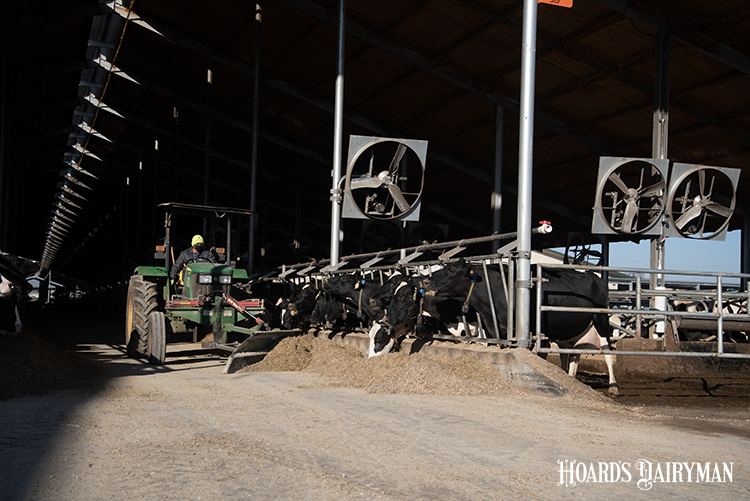
When it comes to forage inclusion in dairy cattle rations, producers have a myriad of options. Traditionally, alfalfa has been a staple providing fiber, protein, and plenty of quality roughage for the nation’s dairy cows. In more recent rations, alfalfa has been partially or completely replaced by by-products or other forages. That’s been taking place for a variety of reasons, including higher returns for alternative cropping options and alfalfa’s demand for water in the parched Western states. As such, alfalfa production has been on the decline for well over a decade in the West, according to DNMCmilk’s Steve Martin during the December 14 Hoard’s Dairyman DairyLivestream.
“When you step back and look at it holistically, it's usually not the cheapest way to get cows fed,” Martin remarked on the viability of alfalfa in rations. “Additionally, you need to think about whether you are making hay or silage. Different qualities of alfalfa and different qualities and types of grass are more forgiving in silage than they are in hay.”
With those thoughts in mind, Cornell Pro-Dairy’s Joe Lawrence suggested grasses can help make up the forage void in rations that aim to limit alfalfa inclusion.
“From an input standpoint, we can make a lot of milk on grass,” he shared. “It does feed differently than alfalfa, and the nutritionist must account for that. It tends to be higher in fiber but also higher in fiber digestibility.”
When deciding between growing alfalfa and grasses, Lawrence reminded producers to consider input costs.
“From a cost input structure, to really feed a grass to get good yield and quality requires nitrogen, and the cost of that is up right now,” the extension specialist explained. “With that in mind, consider how grass inputs will compare on a cost of production basis versus alfalfa.”
Also, those feeding cattle must understand that grass can be less forgiving from a growing perspective than alfalfa.
“If you miss that optimum harvest window with grass, especially if you're basing that on crude protein, it's going to lose a lot of quality faster than alfalfa,” he continued. “Alfalfa will tend to hold protein content a little longer into the harvest window, but its fiber digestibility will continue to go down.”
Consider winter forages, too
Winter forages like rye and triticale can help bolster forage inventories and provide a high-yielding and high-quality option. However, these winter-grown crops also come with some drawbacks.
“It comes back to the infrastructure on the farm,” Lawrence detailed. “Do you have a place to store it on the farm so that you can feed it to the right group of animals at the right time? How is it going to impact your other field operations?”
He explained that in the Northeast and Midwest, late and wet springs can cause these forages to be removed late, impacting the ability of the farm to get other field operations completed such as planting corn and applying manure. Keep these bottlenecks in mind if winter forages are part of your farm’s forage solution.
To watch the recording of the December 14 DairyLivestream, go to the link above. The program recording is also available as an audio-only podcast on Spotify, Google Podcasts, Apple Podcasts, and downloadable from the Hoard’s Dairyman website.
The next broadcast of DairyLivestream will be on Wednesday, January 11, at 11 a.m. CT. You can sign up here now. Registering once will sign you up for all future events.







